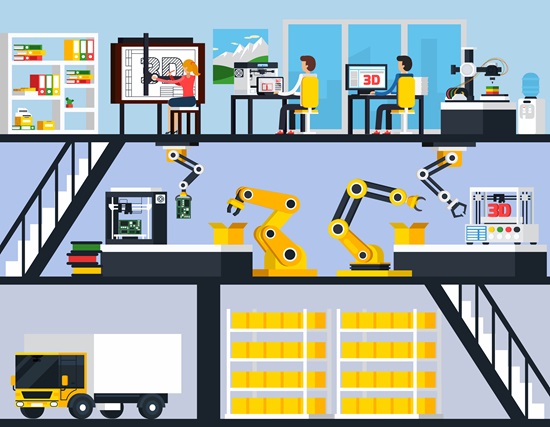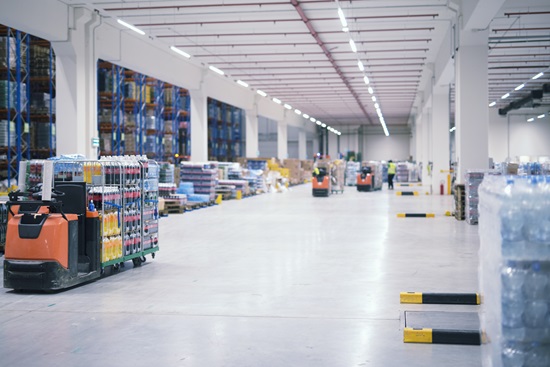Automation displaces jobs but doesn’t destroy jobs. Decision-makers plan to invest in automation. Here we see how to take advantage of automation to get higher-paying manufacturing jobs
Three major issues are identified or stated by decision makers in an Advanced Manufacturing Report published in 2024 by Hexagon research firm. They are Data, Collaboration and Automation. The decision-makers plan to invest in these areas. If so, then it is advisable to hone skills in these areas to stay put in the manufacturing domain.
According to the report, 98% of firms face data issues such as incomplete data, outdated data, inaccurate data. The study included 524 responses from 5 verticals – Automotive, Aerospace & Defense, Electronics, Energy, Healthcare & Life Sciences. Automation is seen as an approach to improve collaboration and communication and that leaders are planning to invest in workflow automation, automated quality control, predictive automation, generative automation, and full automation.
We read that automation leads to job losses. But I am of the thought that building automation systems requires more workforce and thus will create jobs. Building the skills required for building these automation systems is a way to welcome Automation. Automation displaces the workforce but doesn’t reduce the workforce.
Building automation systems requires a workforce with all skill levels. It requires the expertise and experience of people who have worked in manufacturing floors. With re-skilling and re-orienting existing skills and expertise to align with the new demands/requirements, they can bring enormous value to the floor. Automation is a behemoth task and opportunities galore.
What is Automation in the manufacturing industry?
Before discussing the diverse skill sets that would be required for building automation systems, let us understand what is involved in automation in the manufacturing industry.
Automation involves the use of computers, chips and sensors to automate manufacturing processes which are done in a regular, repeated way. There are sensors, actuators, switches, software, network connectivity and when all these are built and connected/integrated, they replace the manual work done in the job floor. For e.g., Sensors check the vitals such as temperature, pressure in the process; Actuators open and close valves in the machines. Software which is a set of code/instructions is developed and when installed in the job floor automates the processes.
The step-by-step instruction (or software) as to how to carry out the manufacturing process is coded in what is called PLCs which stands for Programmable Logic Circuits. Computers equipped with these PLCs are installed in the factories and the task for an employee would be to learn how to use these computer systems to carry out the manufacturing processes. Manual intervention will be required when issues or problems are encountered in the otherwise routine manufacturing process.
PLCs differ for each process. PLCs take inputs which can be any parameter associated with the process, processes the inputs as per the logic written in the code (written in a language called ladder-logic) and produces the output. The output can be fed into another PLC or it can be the only step or the last step in the process. PLCs come either with the machines in-built or can be developed, installed and integrated by in-house custom development.
What can Automation achieve?
Huge amounts of data gets collected when with these PLCs the same process is carried out over and over several times. This data can be analyzed, visualized to improve processes. This data when processed with Machine Learning algorithms can be used to build Artificial Intelligence and robotics systems which will lead to even higher automation. Machine Learning Algorithms can be developed for Artificial Intelligence systems and coded inside PLCs. By doing so, the system by itself can decide how to handle processes which previously required manual intervention. This is the ultimate goal of automation.
How does such automation happen?
Automation does not happen in thin air. It requires enormous efforts, time and commitment. It requires the commitment of all people in the factory to implement a fully automated system. If not, there will be automation but they will be in silos. Here below I would like to put my thoughts as to the skills/capabilities that will be required to build a fully automated system. Through these thoughts, I would like to bring the point that people with manufacturing knowledge/expertise are the core in building these systems and without whom the goal of building automated factories is not attainable.
- 1) Data Management and Data Analysis: PLCs collect vast amounts of data. They are connected to Cloud systems to store, manage, process, retrieve and analyze the data. Securely storing, managing and retrieving the data could be a computational task. But to efficiently process and analyze the data, it will require the experience of people who have the knowledge of the processes. How? In order to efficiently process and analyze the data, it has to be grouped in one or many groups in a logical way. This logical grouping of data is technically called as ‘database schema’ in database language and it is the most important step in building a robust system for data analysis.
- 2) Automating processes with PLCs: The set of instructions that has to be coded in PLCs is to be provided by manufacturers who are thoroughly aware of the process. They have to work along with IT people to develop the system of PLCs. The development process requires documentation of instructions, testing the code by running the process in the factory, identifying errors if any in the process and so on. This is a humongous effort which will require a team of many people with experience of handling the processes.
- 3) Building Artificial Intelligence systems: The popularity of building and incorporating AI systems is increasing day by day. I just cannot emphasize enough how crucial it is to have people of all expertise and skill levels in the team to build an AI system. AI systems are deployed for a variety of tasks – quality control, preventive maintenance, process workflows to name a few. Building an AI system begins with making the machine learn the process, i.e. by implementing Machine Learning in the system. This imparting of learning to the machine begins with the human beings who have the intelligence to teach the machine. Once the machine learns the process, they acquire the intelligence as human beings and are said to have gained artificial intelligence.
- 4) Building Supervised Machine Learning systems: Machine learning process in many scenarios starts with a Machine Learning concept called ‘Supervised Learning’. This is a powerful model which involves building a robust dataset called ‘training dataset’ as the first task. All the parameters, variables that are applicable to the process and their values (measurements) are included in this training dataset. Along with these variables there is something called a ‘Label’ or ‘Predictor’ that is included for every line item in the dataset. Adding a relevant label for each line item is a manual process or at least is a semi-manual process . Labeling each line in the dataset (or annotating each line) is based on the problem that is being solved or in other words it is based on what we want to make the machine learn and predict when it encounters a new set of unseen values in the future. The labeling of the dataset requires knowledge of the subject and can be done only by people who have worked in the factories. Once the training dataset is built with correct labels, computer engineers can build and implement AI/ML systems and automate the processes.
Critical role of manufacturing workforce in AI Automation
- The success or robustness of an AI system heavily depends on how accurately the data is annotated with the accurate labels. As per the popular saying in the Machine-Learning world “Garbage In, Garbage Out”, if the labels are inaccurate then the predictions will also be inaccurate. For e.g. for a hypothetical problem where we have to predict the ethnicity of the person based on some parameters such as weight, height, color, country of origin and few other parameters. The data is in the training dataset and suppose in this dataset, the labels are not correct, ie. a person who is actually an Asian is marked as European. The machine cannot say it is not correct but instead it assumes whatever in the dataset is correct and based on the dataset it learns the patterns for each label and uses these patterns to predict ethnicity when it finds a new set of values in any other dataset. If the dataset is incorrectly labeled (i.e. it is a garbage) to start with, then what comes out as predictions will also be incorrect (i.e. this will also be a garbage). Here I would like to emphasize once more how building such AI systems can be made possible only with the knowledge of the workforce in the factories.
- Again once the machine gives the output, it is important to have workers with subject matter knowledge to verify that the output is correct. If not, it will involve doing a post-analysis to find out if it requires adding more variables to the dataset or removing some variables in the dataset or it requires re-doing some labels and so on and having the whole machine learning process to go through another iteration.
Developing workforce for Automation jobs
It is becoming evident that any automation project requires a huge team of manufacturing workers. The next question is about how to re-skill or develop the workforce that could take advantage of Automation. Developing workforce for Automation will require:
- 1) Training new workers or re-skilling existing workers to think about their work at the system level. This is critical to contribute for Automation projects.
- 2) Training in human-computer interaction in order to operate PLCs and computers in their jobs.
- 3) Training to work along with Software development teams and to communicate effectively in both verbal and written forms with them
- 4) Training to test data outputs from software systems and to give their feedback to rectify or improve processes for automation.
Conclusion
There is enormous job and wage growth for manufacturers with Automation. Automation displaces the workforce but has the potential to create jobs with high-paying wages. With effective training programs, eagerness to learn new skills or re-align existing skills, and determination to face new challenges, high-paying manufacturing jobs can be created here in Indiana.
Image courtesy: Image by Macrovector in FreePik









Leave a Reply